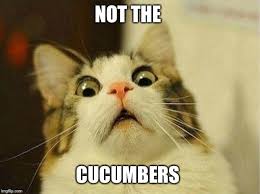
“Was that a carrot?” asked my son in disbelief as Leo raced past him with his treasure. “Yup” I replied with a grin as Leo raced inside again for another. Oh to have so much energy and love of vegetables!
Our Dad disliked vegetables, well most of them anyway. He would eat potatoes, peas and the occasional carrot, but pretty much anything else was a no go. And when he saw me feeding Leo them his reaction was “You’re feeding him vegetables? That poor animal.” LOL Our Mom on the other hand watched me chopping veggies for Leo one night and said “If there’s such a thing as reincarnation I want to come back in my next life as your pet”. 
Just as my parents had different views on vegetables, animals may have a love/hate relationship with them too. However incorporating veggies into their diets gives fresh nutrients, helps provide additional calories without upsetting protein and fat ratios, and makes our budget work, allowing us to give them the best we can afford. Dogs typically adapt pretty well and especially enjoy crunchy vegetables (e.g. carrots, broccoli or cauliflower stalks, corn cobs) while cats will be a lot more disdainful.
Having big dogs around, and mostly limited time available, what has worked best for my husband and I is to make up a batch of mixed veggies (whatever is in the fridge) in a slow cooker and then freeze it in amounts that will provide for several days’ meals at a time. If I do it on my own, it takes me about 30 minutes for the chopping and 10 minutes maximum to divide it all up once cooked and put it in the freezer. With only one dog now that lasts about 2 weeks.



Other pet parents have found it easier to add an extra portion to whatever they are cooking for themselves in terms of veggies and have it on hand for the next day for their pet or serve it straightaway (after cooling of course) if feeding time is roughly the same time as their meal. It’s all about what is convenient for the pet parent while making sure veggies are included each day in their pet’s meals.
While the mixed batch works best for my husband and I, and we love to be together in the kitchen chopping and cooking, there are times when we will feed one vegetable only – usually canned pure pumpkin puree – mostly because we forgot to take a batch out of the freezer in time or when we’re camping. We’ve also used commercial frozen vegetables as needed.
Some vegetables need to be cooked in order for them to be digested properly, while others can be given raw. Although broccoli and cauliflower need cooking Trapper does love the stalks raw and I’m fine giving them to him knowing he will get other veggies in his diet that he can digest properly.
Those that need to be cooked are corn, peas, green beans, broccoli, cauliflower, potatoes, sweet potatoes, celery, carrots (unless finely grated), beetroot (unless finely grated), asparagus, hard winter squashes or any other hard vegetable that cannot be grated or ground.
Vegetables that can be fed raw are finely grated carrots, finely grated zucchini/marrow or other soft squashes, lettuce & other mixed greens (give spinach only sparingly), all bell peppers, cucumber, cabbage, mushrooms, corn cobs and finely grated beetroot.
If you would like to add veggies to your dog’s diet, start small and try out different vegetables but don’t get discouraged if they don’t like some vegetables or even parts of the same vegetable. E.G. Trapper doesn’t like lettuce leaves but does like any stalk part. He doesn’t like raw celery but is quite happy to eat it cooked, same with carrots! For dogs, potatoes, sweet potatoes and beetroot are good ones to start with. For veggies that can be given raw try giving them a small piece of whatever you are chopping for yourself and see how they like it. Avoid onions except in very small quantities.
Cats are generally not vegetable eaters although some like cucumber. If you would like to incorporate veggies in their diet, make sure to chop/process them finely (or puree them) and then mix them in well with wet food. To start, try sweet potato, squash, pumpkin, creamed corn, mushrooms, asparagus, peas and wheat or barley grass.
I’d love to hear your experiences with giving vegetables to your furry friend. What do they like?
Please feel free to contact me if you have any questions. I’m here to help.
with love always,
Loretta
P.S. Oh and if you feed your dog beetroot, don’t be alarmed if their pee or poop turns pink or red! 😉
